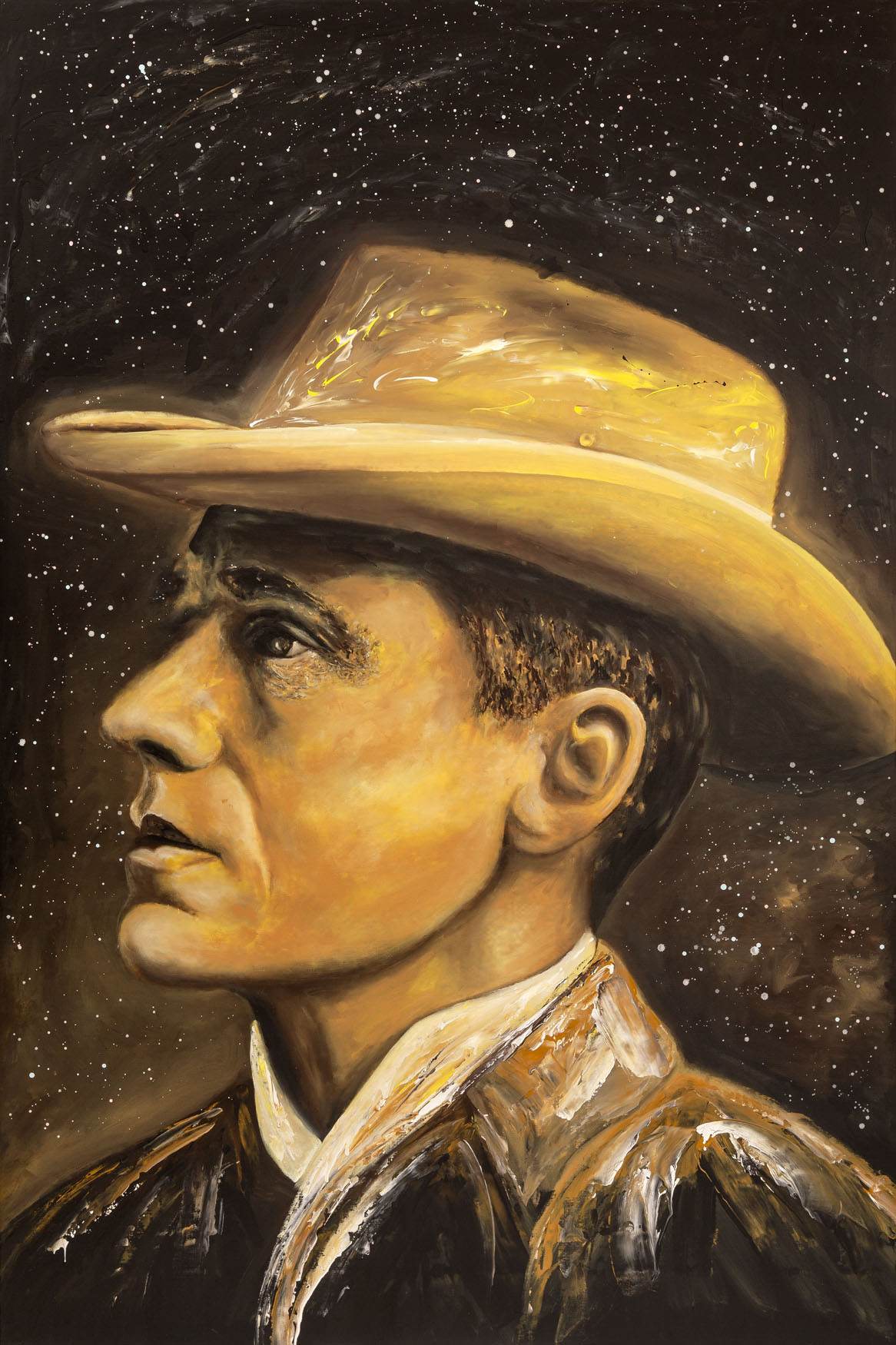Andrew ‘Banjo’ Paterson CBE
Andrew Barton (Banjo) Paterson (1864-1941), poet, solicitor, journalist, war correspondent and soldier, was born on 17 February 1864 at Narrambla near Orange, New South Wales.
By 1895 such ballads as ‘Clancy of the Overflow’, ‘The Geebung Polo Club’, ‘The Man from Ironbark’, ‘How the Favourite Beat Us’ and ‘Saltbush Bill’ were so popular with readers that Angus & Robertson, published the collection, ‘The Man From Snowy River and Other Verses’, in October. The title-poem had swept the colonies when it was first published in April 1890. The book had a remarkable reception: the first edition sold out in the week of publication and 7000 copies in a few months; its particular achievement was to establish the bushman in the national consciousness as a romantic and archetypal figure. The book was as much praised in England as in Australia: The Times compared Paterson with Rudyard Kipling who himself wrote to congratulate the publishers. Paterson’s identity as ‘The Banjo’ was at last revealed and he became a national celebrity overnight.
While on holiday in Queensland late in 1895, Paterson stayed with friends at Dagworth station, near Winton. Here he wrote ‘Waltzing Matilda’ which was to become Australia’s best-known folk song.
His most important journalistic opportunity came with the outbreak of the South African War when he was commissioned by the Sydney Morning Herald and the Melbourne Age as their war correspondent; he sailed for South Africa in October 1899. Attached to General French’s column, for nine months Paterson was in the thick of the fighting and his graphic accounts of the key campaigns included the surrender of Bloemfontein (he was the first correspondent to ride into that town).
When World War I began, Paterson immediately sailed for England, hoping unsuccessfully to cover the fighting in Flanders as war correspondent. He drove an ambulance attached to the Australian Voluntary Hospital, Wimereux, France, before returning to Australia early in 1915.
Almost immediately promoted captain, he served in the Middle East. Wounded in April 1916, he rejoined his unit in July. He was ideally suited to his duties and promoted major, commanded the Australian Remount Squadron from October until he returned to Australia in mid-1919.
He retired from active journalism in 1930 to devote his leisure to creative writing. He was by now a celebrated and respected citizen of Sydney, most often seen at the Australian Club where he had long been a member and where his portrait now hangs. In following years he became a successful broadcaster with the Australian Broadcasting Commission on his travels and experiences. He also wrote his delightfully whimsical book of children’s poems.
In 1939 he was appointed C.B.E. He died, after a short illness, on 5 February 1941 and was cremated with Presbyterian forms.
By the verdict of the Australian people, and by his own conduct and precept, Paterson was, in every sense, a great Australian. Ballad-writer, horseman, bushman, overlander, squatter—he helped to make the Australian legend. Yet, in his lifetime, he was a living part of that legend in that, with the rare touch of the genuine folk-poet, and in words that seemed as natural as breathing, he made a balladry of the scattered lives of back-country Australians and immortalized them.


